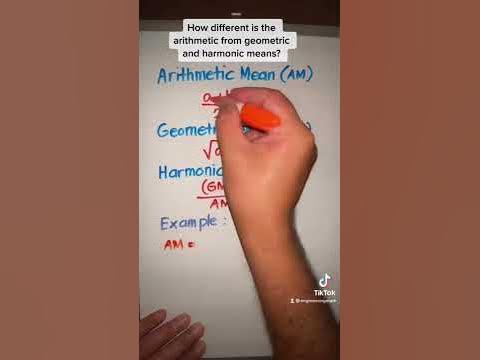Definition of geometric mean
The geometric mean is a mathematical average that is calculated by multiplying together a set of numbers and then taking the nth root, where n is the number of values being averaged. It is commonly used to find the average growth rate or average rate of change. The geometric mean is especially useful when dealing with quantities that multiply or grow exponentially, such as investment returns or population growth rates. It is expressed as the square root of the product of the numbers being averaged.
Formula for calculating geometric mean
The formula for calculating the geometric mean is:
Geometric mean = (x1 * x2 * x3 * … * xn) ^ (1/n)
where x1, x2, x3, …, xn are the values you want to find the geometric mean of, and n is the total number of values.
Applications of geometric mean
The geometric mean is a statistical measure that is used in various applications, primarily in the fields of mathematics and finance. Here are some common applications of the geometric mean:
1. Investment Returns: The geometric mean is often used to calculate the average compounded rate of return on an investment portfolio over multiple periods. It provides a more accurate representation of the actual returns, especially when the returns are volatile.
2. Population Growth: In population studies, the geometric mean is used to calculate the average growth rate of a population over a specific time period. It accounts for the compounding effect that occurs when the population grows over multiple time intervals.
3. Price Indexes: The geometric mean is used in the construction of price indexes, such as the consumer price index (CPI). It helps in calculating the average price changes of a basket of goods and services over time, taking into account the relative weights of the individual items.
4. Sensitivity Analysis: The geometric mean is used in sensitivity analysis to measure the average percentage change between different variables. It helps in understanding the proportional relationship and relative effects of changes in these variables.
5. Quality Control: In manufacturing processes, the geometric mean is used to compute the average of a set of values that represent product quality, such as dimensions or tolerances. It provides a more representative measure when dealing with ratios or proportions.
6. Environmental Science: The geometric mean is used in environmental science to calculate the average concentration of pollutants in a given area. It is particularly useful when dealing with data that follows a log-normal distribution.
7. Image and Signal Processing: In image and signal processing, the geometric mean is used in various algorithms, such as image blending and noise reduction. It helps in maintaining the visual consistency and fidelity of the processed images or signals.
Overall, the geometric mean finds applications in diverse fields due to its ability to handle data with multiplicative relationships or exponential growth. It provides a robust measure that is less affected by extreme values and is widely used in situations where the arithmetic mean may not be appropriate.
Differences between geometric mean and arithmetic mean
The geometric mean and arithmetic mean are both measures of central tendency used in statistics, but they differ in how they calculate the average value of a set of numbers.
The arithmetic mean, also known as the average, is calculated by adding up all the values in a set of numbers and dividing the sum by the total number of values. It is a straightforward calculation that takes into account the magnitude of each value. For example, if you have a set of numbers {1, 3, 5}, the arithmetic mean would be (1+3+5)/3 = 3.
On the other hand, the geometric mean is calculated by taking the n-th root of the product of n numbers. This mean is used when dealing with values that have a multiplicative relationship or when looking at exponential growth rates. For example, if you have a set of numbers {2, 4, 8}, the geometric mean would be ∛(2*4*8) = 4.
One key difference between the two means is how they handle extreme values. The arithmetic mean is sensitive to outliers, so a single extremely high or low value can significantly affect the overall average. The geometric mean, however, is less affected by extreme values because it is based on the product of the numbers rather than their sum.
Additionally, the arithmetic mean is suitable for variables with a linear relationship, such as height or weight, while the geometric mean is more suitable for variables with a multiplicative relationship, such as investment returns or growth rates.
In summary, the geometric mean is used when dealing with exponential growth or a multiplicative relationship between numbers, while the arithmetic mean is used for variables with a linear relationship and is more sensitive to extreme values.
Limitations and considerations of using geometric mean
The geometric mean is a statistical measure that is used to calculate the central tendency of a set of numbers. It is particularly useful when dealing with data that represents rates of change, such as growth rates or investment returns. However, there are several limitations and considerations to keep in mind when using the geometric mean:
1. Non-negative values: The geometric mean can only be calculated for datasets that have non-negative values. Negative values or zero values in the dataset will result in undefined or unrealistic values for the geometric mean.
2. Sensitivity to extreme values: The geometric mean is sensitive to extreme values in the dataset. A single large or small value can greatly influence the value of the geometric mean, leading to potentially misleading results.
3. Incompatibility with addition and subtraction: Unlike the arithmetic mean, the geometric mean is not compatible with addition and subtraction. For example, taking the geometric mean of two numbers and then adding or subtracting them will not yield the same result as adding or subtracting the numbers first and then calculating the geometric mean.
4. Limited interpretability: The geometric mean can present challenges in terms of interpretability. It is the nth root of the product of n values, which is not always intuitive or easy to understand. This can make it difficult to explain the results to non-technical audiences.
5. Sample size considerations: The geometric mean may not be an appropriate measure for datasets with small sample sizes. It is more reliable when there is a larger number of observations to calculate the product and the root of the values.
6. Bias towards smaller values: The geometric mean tends to give more weight to smaller values in the dataset. This means that larger values may have less impact on the overall result, which may not accurately reflect the underlying data.
7. Impracticality for some data types: The geometric mean may not be suitable for data that represents counts or whole numbers, as it can result in decimal or fractional values that do not have real-world meaning.
In conclusion, while the geometric mean has its uses, it is important to consider its limitations and suitability for the specific dataset and analysis at hand. It is advisable to use the geometric mean in conjunction with other statistical measures to obtain a more comprehensive understanding of the data.
Topics related to Geometric mean
How To Calculate The Geometric Mean – YouTube
How To Calculate The Geometric Mean – YouTube
How to Find the Geometric Means? Geometric Sequence – Grade 10 Math – YouTube
How to Find the Geometric Means? Geometric Sequence – Grade 10 Math – YouTube
Math Made Easy by StudyPug! F3.0.0 – YouTube
Math Made Easy by StudyPug! F3.0.0 – YouTube
Geometric Mean Class 10 #shorts – YouTube
Geometric Mean Class 10 #shorts – YouTube
What’s the difference between harmonic means, geometric means, and arithmetic means? – YouTube
What’s the difference between harmonic means, geometric means, and arithmetic means? – YouTube
AM-GM Inequality II – YouTube
AM-GM Inequality II – YouTube
Arithmetic Mean, Geometric Mean and Harmonic Mean Formulas | Chp # 6 | 11th Class Maths | 1st Year – YouTube
Arithmetic Mean, Geometric Mean and Harmonic Mean Formulas | Chp # 6 | 11th Class Maths | 1st Year – YouTube
(5)Geometric Mean (G.M.) / Geometric Progression / Sequence and Series / NCERT Class 11 Mathematics – YouTube
(5)Geometric Mean (G.M.) / Geometric Progression / Sequence and Series / NCERT Class 11 Mathematics – YouTube
CA Foundation | how to find the geometric mean in stats 📈 #cafoundation #icai #dec22 #statistics. – YouTube
CA Foundation | how to find the geometric mean in stats 📈 #cafoundation #icai #dec22 #statistics. – YouTube
Trick To Calculate Geometric Mean By Calculator | CA Foundation Maths Tricks – YouTube
Trick To Calculate Geometric Mean By Calculator | CA Foundation Maths Tricks – YouTube

Peter Scholze is a distinguished German mathematician born on December 11, 1987. Widely recognized for his profound contributions to arithmetic algebraic geometry, Scholze gained international acclaim for his work on perfectoid spaces. This innovative work has significantly impacted the field of mathematics, particularly in the study of arithmetic geometry. He is a leading figure in the mathematical community.










